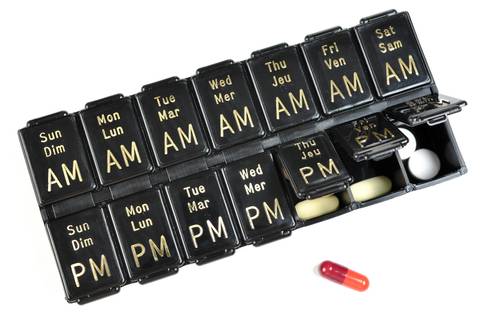We have cones, or color receptors, in our eyes. This is a dead giveaway that we evolved as creatures active in the daylight. It also means we are sensitive to the daily rhythms of light and darkness, also known as the circadian rhythm. The body’s chemical environment changes in a regular cyclic pattern based on the daily photoperiod that varies over the course of the year, dependent on our distance from the equator. Although artificial sources of light allow us to remain active over a longer portion of the day, we have had these light sources available to us on a mass basis for only about a century. As humans, we are still very much dependent on the daily ebb and flow of sunlight.
For those serious about pursuing a career as an athlete, even on an avocational basis, you must realize that developing a regular daily regimen will contribute greatly to your progress. It will allow your training to become the variable in your life, and hence your physiological existence.
The purpose of this article is to explore this topic as it would apply to a lifestyle athlete. Although we cannot all organize our lives to fit an optimal model, cognizance of the optimal model should help in making future lifestyle decisions. I realize that many are on irregular or capricious work schedules, and that life intrudes frequently on the athletic lifestyle, but it is definitely to the benefit of all athletes to attempt to develop some sort of daily schedule to minimize disruptions.
Timing of Training
Strength and power activities generally are conducted most effectively later in the day, preferably in the late afternoon or early evening hours. This, however, is not an excuse to sleep late and remain excessively indolent for much of the preceding time. To make use of this timing, the body must be fed enough calories prior to a late afternoon training. This means the athlete must rise early enough to have breakfast, a snack, and lunch in order to devour, digest, and assimilate the volume of food necessary to provide an adequate internal environment. This is the type of situation where a daily regimen will contribute to optimal training conditions.
Scheduling Sleep
Having a regular sleeping schedule sets the tone for the establishment of a regimen. A regular sleeping schedule should include getting two hours of sleep before midnight. This allows the athlete to rise early enough to begin activating the body and to eat enough times prior to the important training session of the day. It also forces the athlete to establish a regimen for eating, restoration, and recovery after training and before retiring.
The Benefits of Regimen
 A daily regimen reduces emotional stress and anxiety, two factors that upset brain and body chemistry. Unpredictability, and the resulting lack of control, is a major cause of anxiety and a disrupter of the high performance capabilities of the body. As I mentioned earlier, the objective is to have everything in your life be routine, so that training is the only variable.
A daily regimen reduces emotional stress and anxiety, two factors that upset brain and body chemistry. Unpredictability, and the resulting lack of control, is a major cause of anxiety and a disrupter of the high performance capabilities of the body. As I mentioned earlier, the objective is to have everything in your life be routine, so that training is the only variable.
A regimen also has the benefit of making some aspects of the day habitual so they are less likely to be forgotten. For instance the timing of food supplements can be a significant part of the preparation equation. The athlete with a regular schedule is less like to mistime the administration of supplements. The entire goal of establishing a regimented lifestyle is to make as many of the mundane tasks of life as effortless as possible, in order that you can put your energy into the very important activity of training.
I leave you with an appropriate quote from the French novelist Gustave Flaubert, “Be steady and well ordered in your life, so you can be fierce and original in your work.”
Photos courtesy of Shutterstock.






